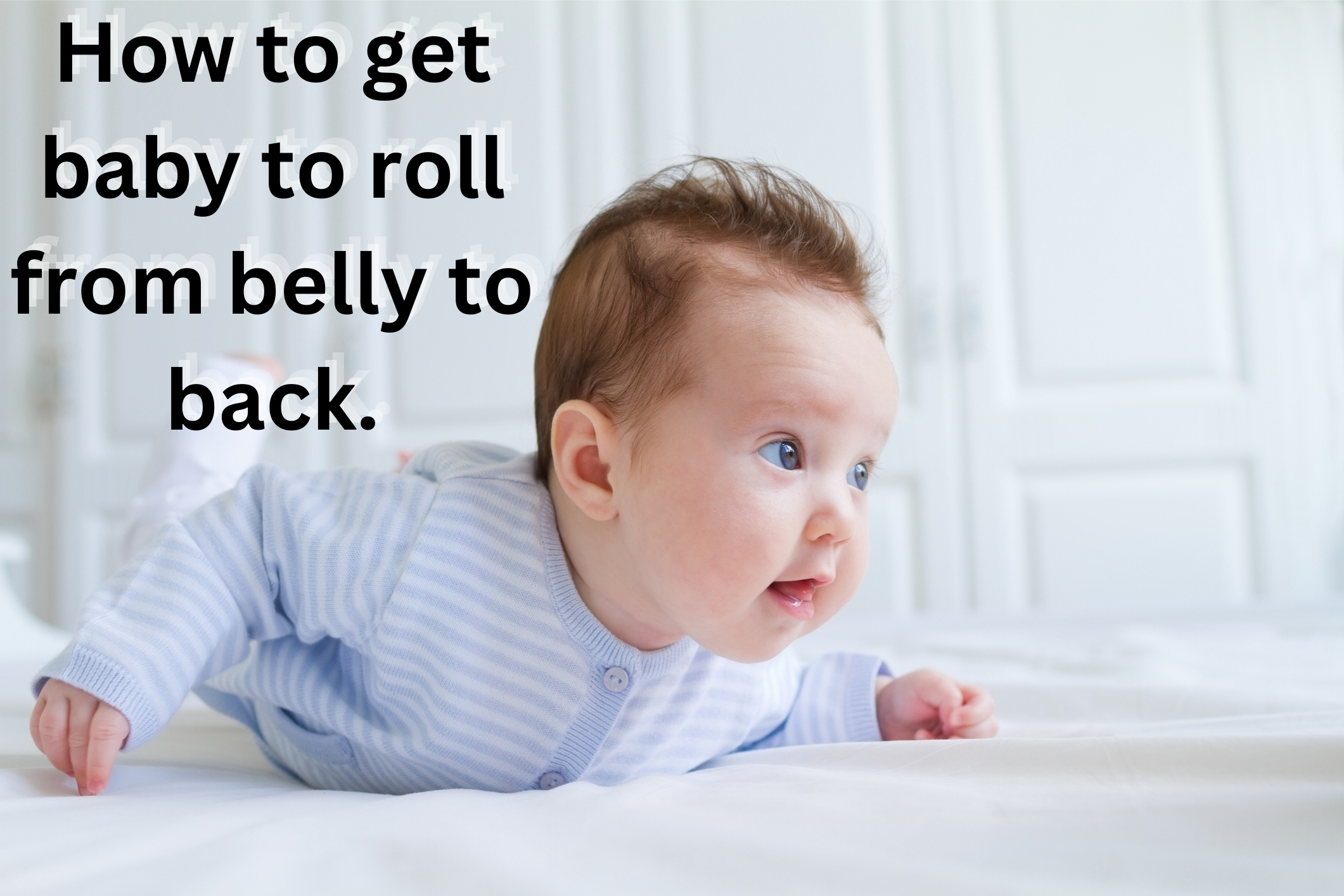How to Get Baby to Roll from Belly to Back: A Comprehensive Guide
Helping Your Little One Achieve This Important Milestone
Table of Contents
- Introduction
- Understanding Baby’s Development
- Why Rolling is Important
- When Do Babies Typically Start Rolling?
- Step-by-Step Guide to Help Your Baby Roll
- Additional Exercises to Promote Rolling
- Signs Your Baby is Ready to Roll
- Common Concerns and Solutions
- Safety Tips During Rolling
- Conclusion
Introduction
Watching your baby grow and hit new milestones is one of the most exciting parts of parenthood. One of the first significant milestones in your baby’s development is rolling over. It might seem like a simple task, but for your little one, it’s a big deal! This article will guide you on how to help your baby roll from belly to back, a crucial step in their physical development.
Understanding Baby’s Development
Before diving into the practical steps, it’s important to understand the stages of your baby’s development. Babies grow at their own pace, and what might be normal for one child might be slightly different for another. However, there are general patterns that can guide you.
Developmental Milestones:
| Age | Developmental Milestone |
|---|---|
| 0-2 Months | Limited head control, reflexive movements |
| 3-4 Months | Improved head control, starting to lift chest during tummy time |
| 4-6 Months | Rolling from belly to back, possibly back to belly, more active movements |
| 6-9 Months | Sitting up without support, starting to crawl |
By understanding these milestones, you can better gauge when your baby might be ready to roll.
Why Rolling is Important
Rolling from belly to back is more than just a cute trick. It marks your baby’s growing strength, coordination, and control over their body. It’s also the first step towards more complex movements like sitting up, crawling, and eventually walking.
Rolling also plays a vital role in helping babies learn about their environment. As they roll, they begin to explore the world around them, leading to increased curiosity and cognitive development. This movement helps build the muscles in their neck, shoulders, arms, and back, all of which are essential for future motor skills.
When Do Babies Typically Start Rolling?
Most babies begin to roll from belly to back between 4 and 6 months old. However, some might start earlier or later, depending on their unique development.
Factors Influencing Rolling:
- Muscle Strength: Babies who get plenty of tummy time tend to develop the necessary muscle strength earlier.
- Personality: Some babies are naturally more active and eager to move, while others are content to stay still.
- Motivation: Babies often roll to reach for a toy or to get closer to a parent. Providing incentives can speed up this process.

Step-by-Step Guide to Help Your Baby Roll
Let’s break down the process into manageable steps:
1. Tummy Time is Key
Tummy time is essential for your baby’s development. It helps strengthen their neck, shoulders, arms, and back muscles, which are crucial for rolling over.
Tips for Tummy Time:
- Start with short sessions of a few minutes, several times a day.
- Gradually increase the duration as your baby gets stronger.
- Make it interactive by lying down with them, talking, or singing.
Example: If your baby dislikes tummy time, try laying them on your chest while you recline. This way, they can look up at your face, making the experience more enjoyable.
2. Encourage Reaching
Encouraging your baby to reach for toys while on their tummy can stimulate the rolling motion. Place toys just out of their reach, prompting them to move.
Suggestions:
- Use brightly colored or musical toys to grab their attention.
- Rotate toys to keep them interested.
Example: Place a rattle just beyond your baby’s grasp. As they stretch to reach it, they may naturally begin to roll over.
3. Use Toys and Props
Props like rolled-up blankets can be placed under your baby’s chest during tummy time to make it easier for them to push up and eventually roll over.
Using Props:
- Place a small rolled towel under their chest to elevate them slightly.
- Ensure the prop is soft and comfortable.
Example: If your baby struggles to lift their head during tummy time, try using a soft cushion under their chest to give them a little extra support.
4. Gentle Assistance
Sometimes, a little help from you can go a long way. Gently guide your baby’s hips to initiate the roll, giving them a sense of the motion.
How to Assist:
- Place your hand on your baby’s hip and gently roll them.
- Always ensure they are safe and supported during this process.
Example: As your baby reaches for a toy, gently guide their legs in the direction of the roll to help them complete the movement.
5. Keep it Fun
Babies learn best through play. Turn rolling practice into a fun game to keep your baby engaged and motivated.
Fun Ideas:
- Clap and cheer when they make progress.
- Use silly sounds or faces to encourage them.
Example: Turn rolling into a playful game by pretending to be surprised every time they manage to roll over. Your reactions will motivate them to keep trying.
READ MORE :
Additional Exercises to Promote Rolling
In addition to the steps above, there are specific exercises you can do with your baby to promote rolling:
- Side-Lying Play: Place your baby on their side with a small rolled-up towel behind their back for support. Encourage them to reach for toys placed in front of them. This position helps them practice the movements needed for rolling.
- Bicycle Legs: Gently move your baby’s legs in a bicycle motion while they are on their back. This helps build strength in their abdominal muscles, which are important for rolling.
- Supported Sitting: Sit your baby on your lap and gently rock them from side to side. This helps them develop balance and strengthens their core muscles, both of which are important for rolling.
Exercise Table:
| Exercise | Age Range | Purpose | How to Perform |
|---|---|---|---|
| Side-Lying Play | 2-6 months | Encourages reaching and rolling | Place baby on side with support, encourage reaching for toys |
| Bicycle Legs | 3-6 months | Strengthens abdominal muscles | Gently move baby’s legs in a bicycle motion while lying on their back |
| Supported Sitting | 4-7 months | Develops balance and core strength | Sit baby on your lap, gently rock them from side to side |
Signs Your Baby is Ready to Roll
Knowing when your baby is ready to roll can help you support them at the right time. Here are some signs to watch for:
- Lifting Head During Tummy Time: If your baby can lift their head and chest during tummy time, they are developing the necessary strength to roll.
- Pushing Up with Arms: Babies who can push up on their arms while on their tummy are building the upper body strength needed to roll over.
- Kicking Legs: If your baby kicks their legs energetically while lying on their back, they might be preparing to roll over.
- Curiosity About Surroundings: Babies who are interested in objects around them are more likely to roll over to reach them.
Common Concerns and Solutions
It’s natural to worry if your baby isn’t rolling as quickly as you expect. Here are some common concerns and practical solutions:
| Concern | Solution |
|---|---|
| Baby isn’t showing interest in rolling | Increase tummy time and engage with more interactive toys. |
| Baby cries during tummy time | Try shorter sessions or do tummy time when your baby is in a good mood (after a nap or feed). |
| Baby rolls to one side only | Encourage rolling in both directions by placing toys on the other side. |
| Baby is rolling too early | Ensure they have a safe environment to practice and develop their motor skills. |
Example: If your baby only rolls to one side, try placing toys on the opposite side during tummy time to encourage them to roll in that direction. You can also gently guide their legs to help them start the roll.
Safety Tips During Rolling
As your baby starts to roll, safety becomes a crucial concern. Here are some tips to ensure your baby’s safety during this stage:
- Supervise Rolling Sessions: Always keep an eye on your baby when they are practicing rolling. Make sure they are on a safe, flat surface, such as a play mat or carpeted floor.
- Remove Hazards: Keep the rolling area free of objects that could cause injury, such as sharp toys or small items that could be a choking hazard.
- Avoid Elevated Surfaces: Never leave your baby unattended on elevated surfaces, such as beds or couches, as they could roll off and get injured.
- Use a Firm Surface: Ensure your baby is rolling on a firm surface that provides good support. Soft, cushy surfaces like pillows or soft mattresses can make it harder for your baby to roll.
Safety Table:
| Safety Tip | Importance | How to Implement |
|---|---|---|
| Supervise Rolling Sessions | Prevents accidents or injuries | Always stay close when baby is practicing rolling |
| Remove Hazards | Ensures a safe rolling environment | Clear the area of any sharp or small objects |
| Avoid Elevated Surfaces | Prevents falls and injuries | Practice rolling on the floor, not on beds or couches |
| Use a Firm Surface | Provides support for proper rolling | Use a play mat or carpeted floor instead of soft or uneven surfaces |
Conclusion
Helping your baby roll from belly to back is an exciting journey that requires patience, encouragement, and lots of love. Remember, every baby is different, and there’s no need to rush their progress. Celebrate the small victories and enjoy this special time with your little one.
By following these tips and understanding your baby’s development, you’ll be well on your way to supporting them in reaching this important milestone.
Rolling over is just the beginning of your baby’s physical development. After mastering this skill, they will move on to more complex movements, such as sitting up, crawling, and eventually walking. So, enjoy each moment and take pride in your baby’s progress.








Pingback: Why Does My Baby Put His Fingers In My Mouth. - Babyfow.com